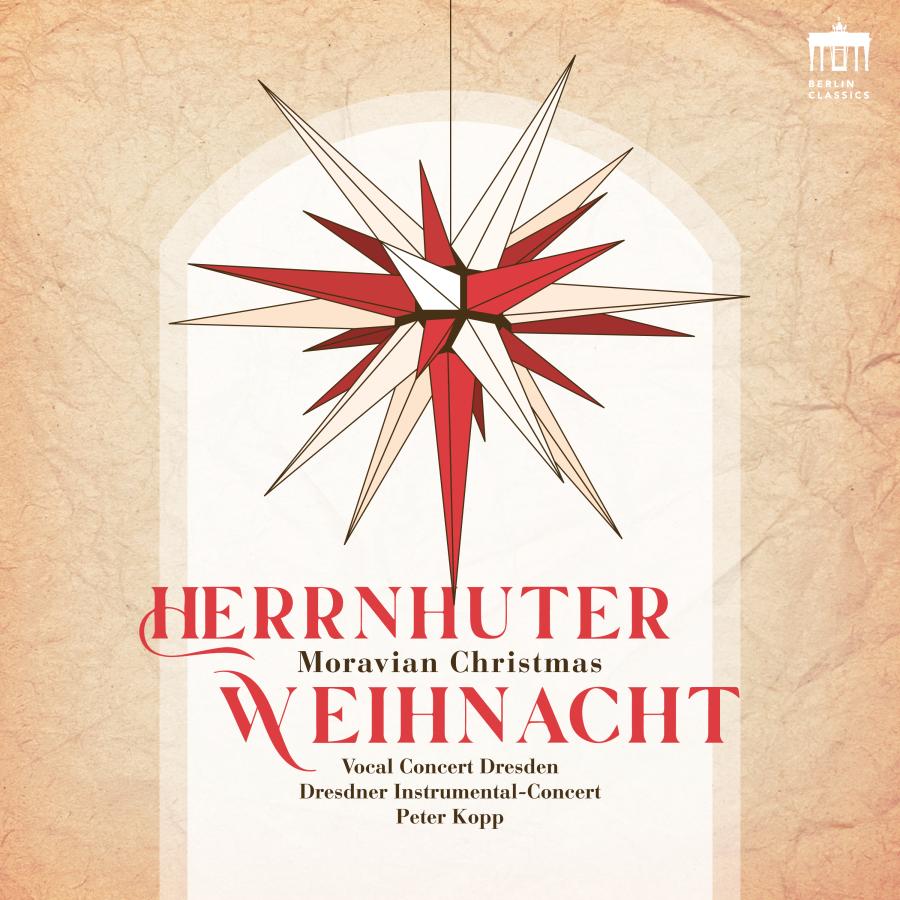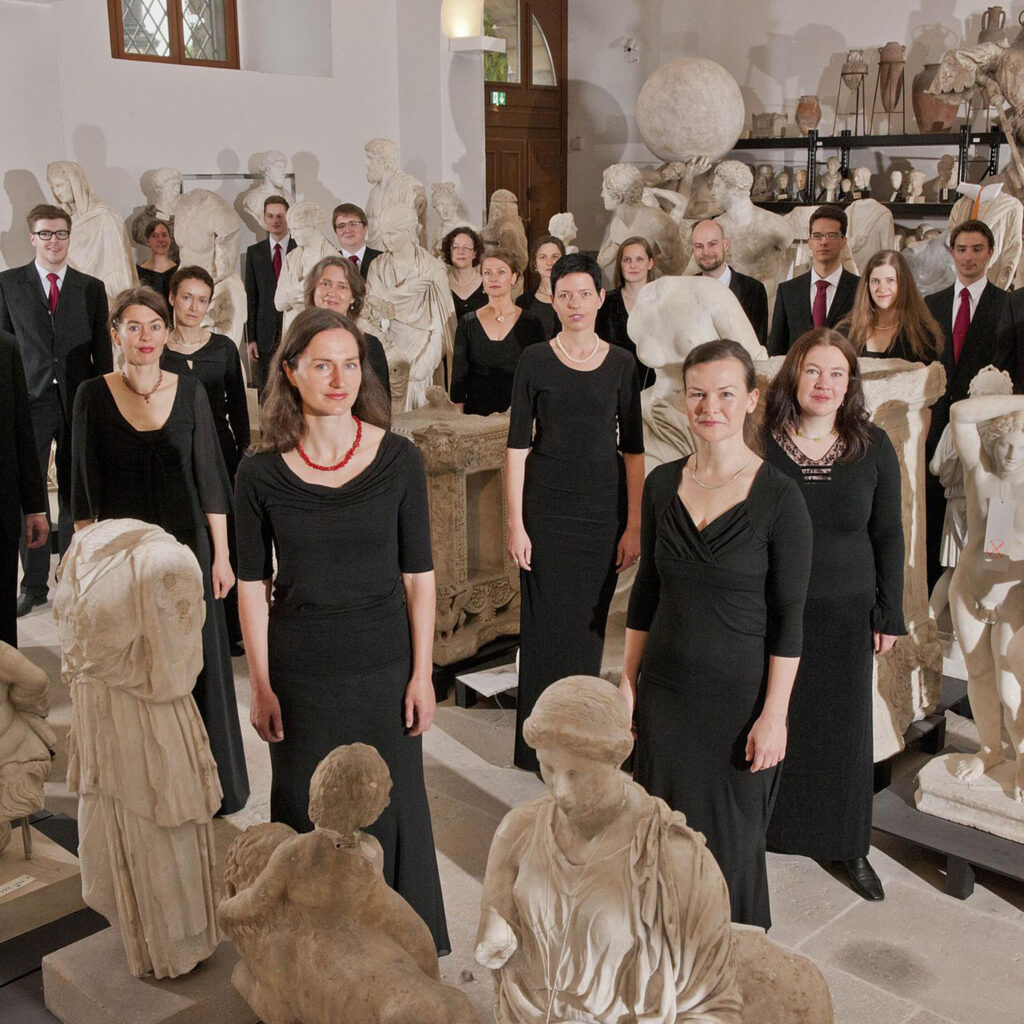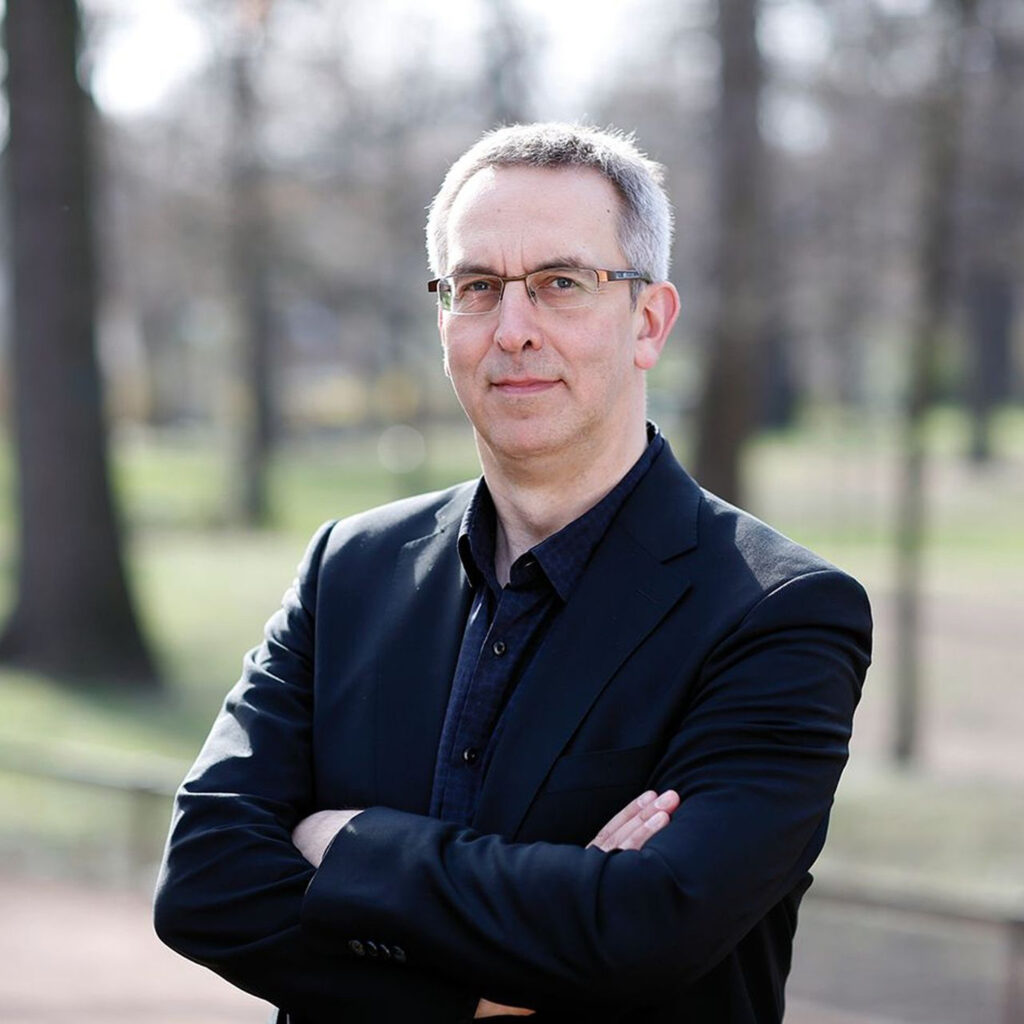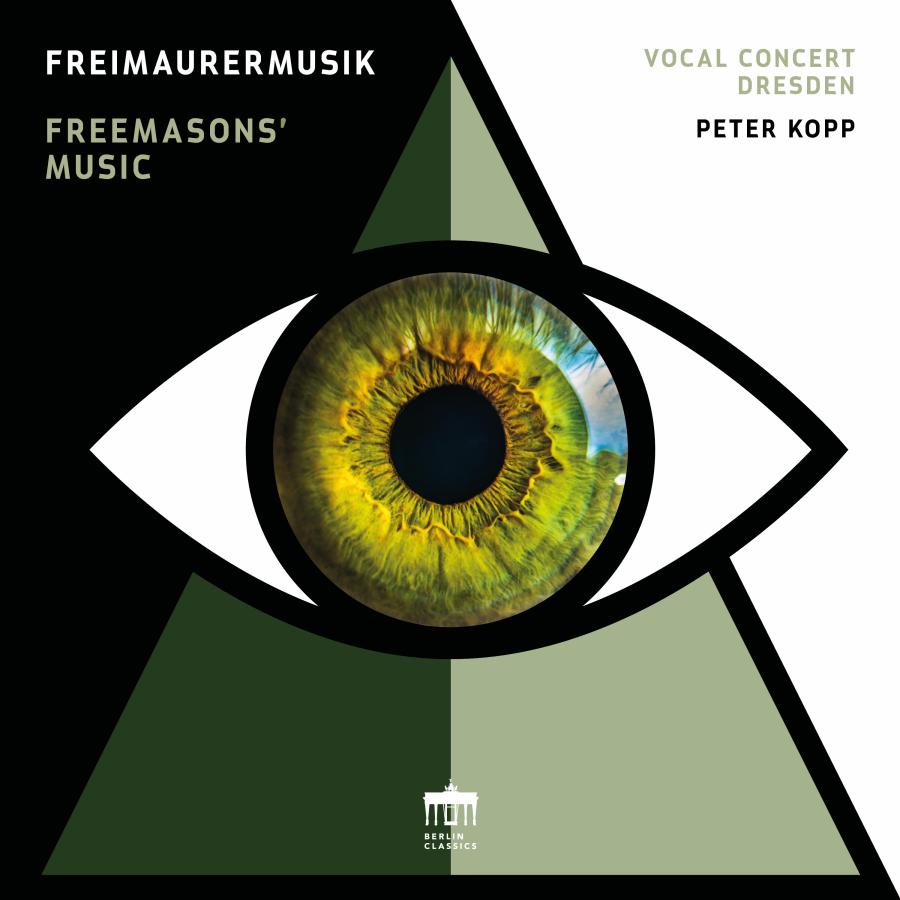Peter Kopp and his Vocal Concert Dresden have long since made a name for themselves with their releases on disc of highly interesting and hitherto little regarded compilations and programmes. Following works from the Dresden court and Venetian gems, the most recent release was Masonic music of the 18th century. The latest project, then, is the music of the Moravian Brethren. The Brotherhood’s historical merit and international significance, radiating out from a picturesque village in Saxony across the whole world, will be celebrated at its tercentenary next year; in the meantime, it is working on being acknowledged by UNESCO as part of the world’s Cultural Heritage together with the Moravian Brothers in Bethlehem (PA, US) and Gracehill (UK).
Persecuted in their homeland of Bohemia and Moravia, the early Reformation fellowship of “Bohemian Brethren” founded a settlement “unter des Herren Hut” (under the protection of the Lord) in 1722 on the estate of Count Zinzendorf in Upper Lusatia. By so doing, they laid the foundation for a community of faith that flourishes to this day and for a movement that has grown into an international network. Very soon, other communities were being founded elsewhere: from London to Berlin, in Holland, Denmark, North Carolina and Pennsylvania, on Greenland and in the Caribbean.
The Brotherhood was from the start a singing community. “Singing sessions”, “sermons in song” and new compositions by the musicians of Herrnhut played an important part alongside a creative and undogmatic approach to congregational hymns. For instance, instead of singing the consecutive verses of individual songs, they combined thematically related verses or even odd lines of different songs, which the congregation evidently knew more or less by heart. “The Herrnhuters have Musicians on all Instruments among them, who may in part pass for Virtuosos, and one will not find Music as sound as this in many a Princely Chapel,” says a contemporary account.
Emigration and missions to North America by the Brethren have left a fascinating store of music there, and this is now regarded as one of the fundamental building-blocks of North American music history. In the 18th and early 19th century, one might encounter good music from Europe in the settlements of the Moravian community, which thus served as a musical bridge between Europe and the New World. This link is noteworthy for the fact that even compositions written in remote regions were brought back to Germany and added to the local repertoire. This must have been absolutely unique to the Herrnhut movement in the 18th century.
The programme is the result of intensive research in the archives of the Moravian Brotherhood in Upper Lusatia and also overseas. Almost all works are world premiere recordings, which in some cases had to be reconstructed. Peter Kopp, long-serving director of the Dresden Kreuzkirche choir, now Rector of the Lutheran College for Church Music in Halle (Saale), has therefore joined with the Vocal Concert Dresden, the Dresdner Instrumental-Concert and other guest musicians to give an unique insight into the Moravian music of the 18th and early 19th centuries and thus provide a fascinating illustration of a regional music tradition that went on to acquire international relevance.
Apart from its high repertoire value, this recording is notable for its presentation of festive Christmas music. Lovers of Baroque music for the Christmas season will be as enthusiastic as listeners who hope to enlarge their musical spectrum.
Herrnhuter Weihnacht Vocal Concert Dresden & Peter Kopp

Composer





Further information
Genre
Klassik
Weihnachtsklassik
Publication date
12.11.2021
Peter Kopp and his Vocal Concert Dresden have long since made a name for themselves with their releases on disc of highly interesting and hitherto little regarded compilations and programmes. Following works from the Dresden court and Venetian gems, the most recent release was Masonic music of the 18th century. The latest project, then, is the music of the Moravian Brethren. The Brotherhood’s historical merit and international significance, radiating out from a picturesque village in Saxony across the whole world, will be celebrated at its tercentenary next year; in the meantime, it is working on being acknowledged by UNESCO as part of the world’s Cultural Heritage together with the Moravian Brothers in Bethlehem (PA, US) and Gracehill (UK).
Persecuted in their homeland of Bohemia and Moravia, the early Reformation fellowship of “Bohemian Brethren” founded a settlement “unter des Herren Hut” (under the protection of the Lord) in 1722 on the estate of Count Zinzendorf in Upper Lusatia. By so doing, they laid the foundation for a community of faith that flourishes to this day and for a movement that has grown into an international network. Very soon, other communities were being founded elsewhere: from London to Berlin, in Holland, Denmark, North Carolina and Pennsylvania, on Greenland and in the Caribbean.
The Brotherhood was from the start a singing community. “Singing sessions”, “sermons in song” and new compositions by the musicians of Herrnhut played an important part alongside a creative and undogmatic approach to congregational hymns. For instance, instead of singing the consecutive verses of individual songs, they combined thematically related verses or even odd lines of different songs, which the congregation evidently knew more or less by heart. “The Herrnhuters have Musicians on all Instruments among them, who may in part pass for Virtuosos, and one will not find Music as sound as this in many a Princely Chapel,” says a contemporary account.
Emigration and missions to North America by the Brethren have left a fascinating store of music there, and this is now regarded as one of the fundamental building-blocks of North American music history. In the 18th and early 19th century, one might encounter good music from Europe in the settlements of the Moravian community, which thus served as a musical bridge between Europe and the New World. This link is noteworthy for the fact that even compositions written in remote regions were brought back to Germany and added to the local repertoire. This must have been absolutely unique to the Herrnhut movement in the 18th century.
The programme is the result of intensive research in the archives of the Moravian Brotherhood in Upper Lusatia and also overseas. Almost all works are world premiere recordings, which in some cases had to be reconstructed. Peter Kopp, long-serving director of the Dresden Kreuzkirche choir, now Rector of the Lutheran College for Church Music in Halle (Saale), has therefore joined with the Vocal Concert Dresden, the Dresdner Instrumental-Concert and other guest musicians to give an unique insight into the Moravian music of the 18th and early 19th centuries and thus provide a fascinating illustration of a regional music tradition that went on to acquire international relevance.
Apart from its high repertoire value, this recording is notable for its presentation of festive Christmas music. Lovers of Baroque music for the Christmas season will be as enthusiastic as listeners who hope to enlarge their musical spectrum.
Tracklist - These are the tracks you will hear on the album
Herrnhuter Weihnacht
Vocal Concert Dresden & Peter Kopp
1
Macht hoch die Tür
2
Uns ist ein Kind geboren
3
Den Hirten dort auf Bethle'ms Feld
4
Mein Herz dichtet ein feines Lied
5
Den aller Welt Kreis nie beschloss
6
O verehrungswürd'ge Nacht
7
Loveliest Emmanuel
8
Hail Infant Newborn
9
No. 1, Singet dem Herrn
10
No. 2, So sang der Väter Mund
11
No. 3, Ach, dass du den Himmel
12
No. 4, Froh war, wer seinen Tag
13
No. 5, Tröstet mein Volk
14
No. 6, Zion hört's
15
No. 7, Hosianna, gelobet sei
16
No. 8, Die wahre Gnadensonne
17
No. 9, Wer ist es, der da kommt
18
No. 10, Meine Seel auf Rosen geht
19
No. 11, Machet die Tore weit
20
No. 12, Es ist der Herre Christ
21
No. 13, Machet die Tore weit
22
No. 14, Zeuch in unsre Herzen ein
23
No. 15, Wer ist derselbe König
24
No. 16, Der wahre Gott der Kreatur
25
No. 17, Kündlich gross
26
No. 18, Er ward im Leib ein's Jungfräuleins
27
No. 19, Und in Bethlehem
28
No. 20, Siehe, ich verkündige euch
29
No. 21, Bis' willkommen, du edler Gast
30
No. 22, Und das habt zum Zeichen
31
No. 23, O Kind, o süsser Knabe
32
No. 24, Das Lächeln deines Mundes
33
No. 25, Und schick uns
34
No. 26, Die Engel und Menschen
35
No. 27, Und alsbald war da
36
No. 28, Ehre sei Gott in der Höhe
37
No. 29, Nun singt des Lamms
38
No. 30, Ach, Christnacht
39
No. 31, O, dass ihn doch
40
No. 32, Du heilige Dreieinigkeit


















